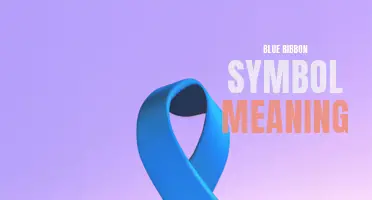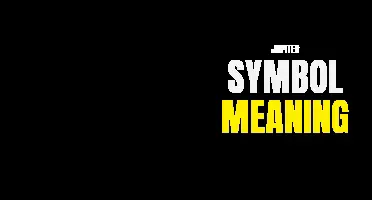
Easter is a time of joy and celebration for many, but it's not just about colorful eggs and cute bunnies. Behind these popular symbols lie deeper meanings that remind us of the core message of faith, renewal, and hope. The Easter egg, with its vibrant hues and hidden surprises, represents new life and the resurrection of Jesus. Similarly, the Easter bunny, known for its fertility, symbolizes the rebirth and abundance of nature during the spring season. As we delve into the rich symbolism of Easter, we discover a tapestry of traditions and beliefs that have been passed down through generations, reminding us of the enduring power of faith and the beauty of life's eternal cycle.
What You'll Learn
- What are some common symbols associated with Easter and what do they represent?
- How does the Easter bunny symbolize fertility and new life?
- What is the significance of the cross as a symbol of Easter and Christianity?
- Why is the color white often associated with Easter and what does it symbolize?
- What is the meaning behind the Easter lily as a symbol of purity and resurrection?

What are some common symbols associated with Easter and what do they represent?
Easter is a religious holiday celebrated by Christians around the world. It commemorates the resurrection of Jesus Christ from the dead, as described in the New Testament of the Bible. While the main focus of Easter is the religious significance, there are also several symbols that have become associated with the holiday over time. These symbols often have deep meanings and represent various aspects of the Easter story.
- Easter Eggs: One of the most well-known symbols of Easter is the egg. Eggs have long been associated with fertility and new life, and they have been used in springtime celebrations for centuries. In the Christian tradition, Easter eggs represent the tomb from which Jesus emerged when he was resurrected. The tradition of decorating eggs is believed to have started in the Orthodox Christian community, where eggs were dyed red to symbolize the blood of Christ. Today, Easter eggs are often decorated in a variety of colors and patterns.
- Easter Bunny: The Easter Bunny is a popular symbol of Easter, especially in Western cultures. The origins of the Easter Bunny can be traced back to German folklore. It was believed that the Easter Bunny would bring eggs and treats to children who had been good throughout the year. The Easter Bunny is often depicted as a rabbit, which is known for its fertility and ability to reproduce quickly. The tradition of the Easter Bunny hiding eggs for children to find can be seen as a representation of new life and rebirth.
- Cross: The cross is a powerful symbol in Christianity, and it is particularly significant during Easter. The cross represents the crucifixion of Jesus and serves as a reminder of his sacrifice for the salvation of mankind. The empty cross, which is often seen in churches and during Easter services, symbolizes the resurrection and victory over death. It is a symbol of hope and new life.
- Lilies: Lilies are another symbol associated with Easter, and they hold a special significance in Christian tradition. These beautiful flowers are often seen in churches and religious ceremonies during the Easter season. Lilies are believed to symbolize purity, innocence, and the resurrection of Christ. According to Christian legend, lilies were said to have grown in the Garden of Gethsemane, where Jesus prayed before his crucifixion. The white lily is particularly associated with the Virgin Mary, often referred to as the "Madonna Lily."
- Palm Branches: Palm branches are commonly associated with Easter, especially on Palm Sunday, which marks the beginning of Holy Week. This tradition dates back to biblical times when Jesus rode into Jerusalem on a donkey, and people laid palm branches on the ground to welcome him. In Christian symbolism, palm branches represent victory, triumph, and peace. They are a reminder of Jesus' triumphal entry into Jerusalem and the anticipation of his ultimate victory over death.
These symbols of Easter hold deep meaning and are a way for Christians to connect with the religious significance of the holiday. Whether it's the egg representing new life, the bunny symbolizing fertility, or the cross symbolizing sacrifice and resurrection, these symbols help to convey the profound message of Easter and the hope it brings.
The Intriguing Symbolism and Meaning Behind Arrows
You may want to see also

How does the Easter bunny symbolize fertility and new life?
The Easter bunny has long been a symbol of fertility and new life, representing the rebirth and rejuvenation that comes with the arrival of spring. Although the idea of a bunny laying eggs may seem puzzling, it is deeply rooted in ancient folklore and pagan traditions.
The association between rabbits and fertility can be traced back to ancient times. The rabbit is known for its incredible reproductive abilities, as it can produce multiple litters of offspring in a single year. In many cultures, rabbits were seen as a symbol of abundance and fertile land. This connection to fertility made them a fitting symbol for Easter, which celebrates new beginnings and the arrival of spring.
In addition to their prolific reproduction, rabbits were also associated with the goddess Eostre in Germanic mythology. Eostre was a goddess of spring and fertility, and she was often depicted with a bunny or hare by her side. It is said that Eostre found a wounded bird and transformed it into a hare to save its life. As a result, the hare became sacred to her and was associated with new life and fertility.
These pagan traditions and beliefs were later incorporated into Christian celebrations of Easter. As Christianity spread throughout Europe, it absorbed and transformed many existing customs and rituals. The Easter bunny, with its strong connection to fertility and new life, became intertwined with the Christian celebration of the resurrection of Jesus Christ.
The introduction of the Easter egg further solidified the link between the bunny and fertility. Eggs have long been a symbol of new life and rebirth, and they were often included in pagan rituals celebrating the arrival of spring. Early Christians adopted this symbolism, viewing the egg as a representation of the tomb from which Jesus emerged after his crucifixion. The Easter bunny, as the bringer of eggs, became a popular figure associated with the holiday.
Over time, the Easter bunny and Easter eggs have become widely recognized symbols of Easter. Children eagerly anticipate the arrival of the Easter bunny, who is believed to hide eggs for them to find. This tradition of hunting for eggs is a modern iteration of ancient customs celebrating fertility and new life.
Today, the Easter bunny continues to represent the joyful spirit of spring, fertility, and new beginnings. Its presence during the Easter season serves as a reminder to embrace the change and growth that comes with the arrival of warmer weather and longer days. Whether through chocolate bunnies or fluffy stuffed animals, the Easter bunny has become an endearing symbol of the season and a beloved character in the holiday's celebrations.
Understanding the Symbolic Meaning of the Alzheimer's Ribbon: A Sign of Hope and Support
You may want to see also

What is the significance of the cross as a symbol of Easter and Christianity?
The cross is one of the most recognizable symbols of Easter and Christianity, and it holds significant meaning for Christians around the world. The cross is a symbol of the crucifixion of Jesus Christ, and it represents the central event in Christian theology and history.
The crucifixion of Jesus is the foundation of the Christian faith. According to the New Testament, Jesus was sentenced to death by crucifixion by Pontius Pilate, the Roman governor of Judea, around 30 AD. He was nailed to a wooden cross and hung there for several hours until he died. This event is commonly known as the Passion of Christ.
For Christians, the cross represents several key aspects of their faith. Firstly, it serves as a reminder of Jesus' sacrifice and the redemptive power of his death. Christians believe that Jesus willingly went to the cross to take the punishment for humanity's sins, offering salvation to all who believe in him. The cross, therefore, symbolizes forgiveness, love, and God's grace.
Secondly, the cross represents victory over sin and death. According to Christian belief, Jesus conquered death through his resurrection on Easter Sunday, three days after his crucifixion. The empty cross represents the triumph of life over death, and it gives hope to Christians that they too can have eternal life by placing their faith in Jesus.
Furthermore, the cross symbolizes the call to discipleship and self-sacrifice. Jesus taught his followers to take up their cross and follow him, meaning that they should be willing to give up their own desires and priorities in order to serve God and others. The cross, therefore, serves as a constant reminder of the Christian call to love and serve one another.
The use of the cross as a symbol of Christianity can be traced back to the early days of the church. In the early centuries of Christianity, the cross was not widely depicted as a way to remember the crucifixion, as it was seen as a brutal and shameful form of execution. However, over time, the cross became a powerful symbol of faith and hope for Christians.
Today, the cross is displayed prominently in churches and worn as a piece of jewelry by Christians. It serves as a visible reminder of the central message of Christianity and the sacrifice of Jesus. The cross has also been incorporated into various forms of Christian art and symbolism, such as stained glass windows, paintings, and sculptures.
In conclusion, the cross is a significant symbol of Easter and Christianity. It represents Jesus' sacrifice and the redemptive power of his death, as well as victory over sin and death. The cross is a constant reminder of the Christian call to discipleship and self-sacrifice. It serves as a powerful symbol of the central events and teachings of the Christian faith, and it is a source of hope and comfort for believers around the world.
Decoding the Hidden Meanings Behind the Nissan Logo
You may want to see also

Why is the color white often associated with Easter and what does it symbolize?
The color white is often associated with Easter and holds significant symbolism in the Christian faith. This article will explore why white is a predominant color during the Easter season and what it represents.
White represents purity, innocence, and new beginnings. Christians view Easter as a time of renewal and rebirth, as it commemorates the resurrection of Jesus Christ from the dead. The color white is thus highly appropriate as it signifies the purity and innocence of Jesus, who Christians believe was without sin.
The association with white also stems from the story of Jesus' transfiguration, where his appearance became dazzlingly white and his garments radiant. This event is seen as a prefiguration of his resurrection and is often depicted with white robes in Christian art.
Furthermore, white is linked to baptism, one of the sacraments in Christianity. Baptism is a symbolic act in which a person is cleansed from sin and welcomed into the family of God. White garments are traditionally worn during baptisms to symbolize purity and the washing away of sin. Easter is a time when new converts often receive the sacrament of baptism, and the color white is used to represent this spiritual cleansing.
In some Christian churches, the color white is also used for the priest's vestments and altar cloths during Easter. The white vestments serve as a visual reminder of the resurrection and the victory of life over death. It reflects the joy and hope that Easter brings, as Christians believe that through Jesus' death and resurrection, they have been freed from the bondage of sin and have the hope of eternal life.
White also plays a role in Easter decorations, such as flowers and lilies. These flowers are often associated with purity and are commonly used in Easter arrangements. The white lily, in particular, holds strong symbolism in Christianity, representing purity, chastity, and the resurrection of Christ.
Overall, the color white holds deep significance in the Easter season. It represents purity, new beginnings, and the victory of life over death. Whether in the attire, decorations, or symbols of the season, white serves as a visual reminder of the central message of Easter – the resurrection of Jesus Christ and the hope it brings for all believers.
The Symbolic Meaning of Valhalla: Unlocking the Secrets of Norse Mythology
You may want to see also

What is the meaning behind the Easter lily as a symbol of purity and resurrection?
The Easter lily is a popular symbol of purity and resurrection during the Easter season. This beautiful flower holds great significance in many religious and cultural traditions around the world. The meaning behind the Easter lily stems from its delicate and pure white petals, which are reminiscent of the purity and innocence of the Virgin Mary.
In Christian beliefs, the Easter lily is often associated with the resurrection of Jesus Christ. According to the Bible, the white petals of the lily represent the purity and beauty of Christ's soul. The trumpet-shaped flowers are believed to symbolize the call to resurrection and new life. It is said that these flowers appeared in the Garden of Gethsemane after Jesus' crucifixion, signifying his resurrection and triumph over death.
The association between the Easter lily and the Virgin Mary is also prominent in Christian symbolism. The white petals symbolize her immaculate purity and virtue. It is believed that when the Angel Gabriel visited Mary to announce her divine pregnancy, the white lilies bloomed in her presence.
The Easter lily's symbolism goes beyond Christianity and is also significant in other cultures and religions. In ancient Rome, the lily was associated with Venus, the goddess of love and beauty. It was considered a symbol of both purity and fertility.
In Japanese culture, the Easter lily, or "Yuri," is highly revered and considered a symbol of renewal and rebirth. It is associated with Buddhist beliefs and represents the transformation from suffering to enlightenment.
The Easter lily's popularity as a symbol of purity and resurrection has led to its widespread use during the Easter season. These beautiful flowers are often used to decorate churches and homes, symbolizing the hope and joy of the resurrection. Many Christians also give Easter lilies as gifts to symbolize their faith and celebrate new beginnings.
The Easter lily's pure white color, elegant shape, and delicate fragrance make it a fitting symbol for the spiritual themes of Easter. Whether displayed in churches, used in religious ceremonies, or given as gifts, the Easter lily serves as a reminder of the hope and new life that Easter brings.
In conclusion, the Easter lily is a powerful symbol of purity and resurrection. Its association with Jesus Christ's resurrection and the Virgin Mary's purity makes it an important part of the Easter season for Christians. The lily's symbolism extends across different cultures and religions, representing renewal, rebirth, and the triumph of light over darkness. As Easter approaches, the beauty and meaning behind the Easter lily continue to inspire and uplift people around the world.
The Symbolism and Meanings Behind the Four Evangelists: Unveiling the Secrets of Their Icons
You may want to see also
Frequently asked questions
The Easter bunny is a popular symbol associated with Easter, particularly in Western cultures. It is often seen as a symbol of fertility and new life, as rabbits are known for their prolific breeding habits. The tradition of the Easter bunny is believed to have originated in Germany, where it was introduced to America by German immigrants in the 18th century.
Eggs have long been associated with fertility and rebirth in many cultures, making them a fitting symbol for Easter, which celebrates the resurrection of Jesus Christ. The tradition of decorating and giving eggs at Easter goes back centuries, with different cultures adopting their own unique customs and techniques for egg decorating.
The Easter lily is a popular flower associated with Easter, often used in church decorations and given as gifts. It is commonly regarded as a symbol of purity, innocence, and the resurrection of Jesus. The white petals of the Easter lily are said to represent the purity and divinity of Christ, while the trumpet-like shape of the flower symbolizes the call to worship and praise.
The cross is perhaps the most important symbol of Easter as it represents the crucifixion and resurrection of Jesus Christ. It signifies the sacrifice made by Jesus for the forgiveness of sins and the promise of eternal life. The empty cross is often used as a symbol of triumph over death, reminding Christians of the hope and salvation that Easter brings.







